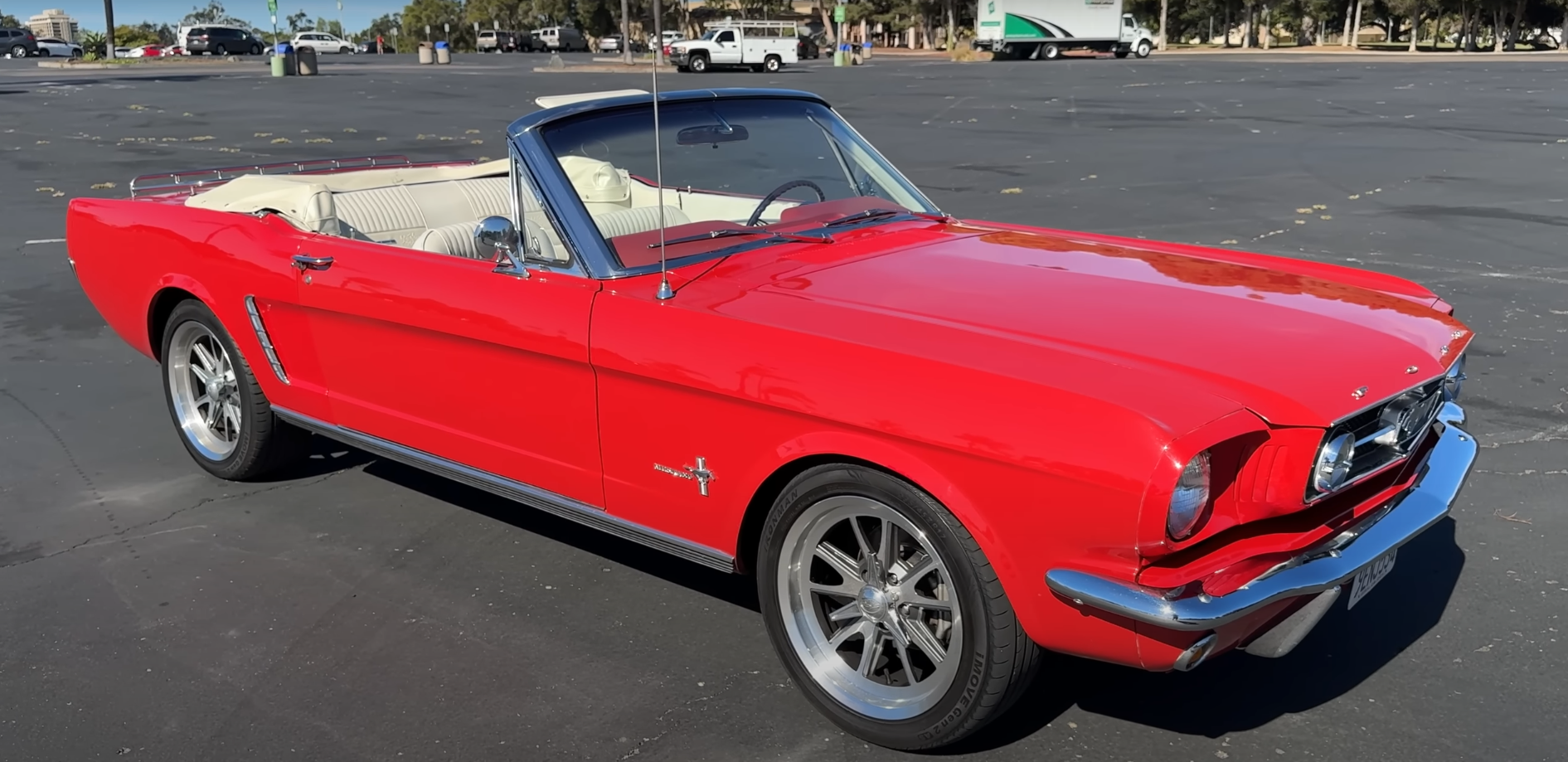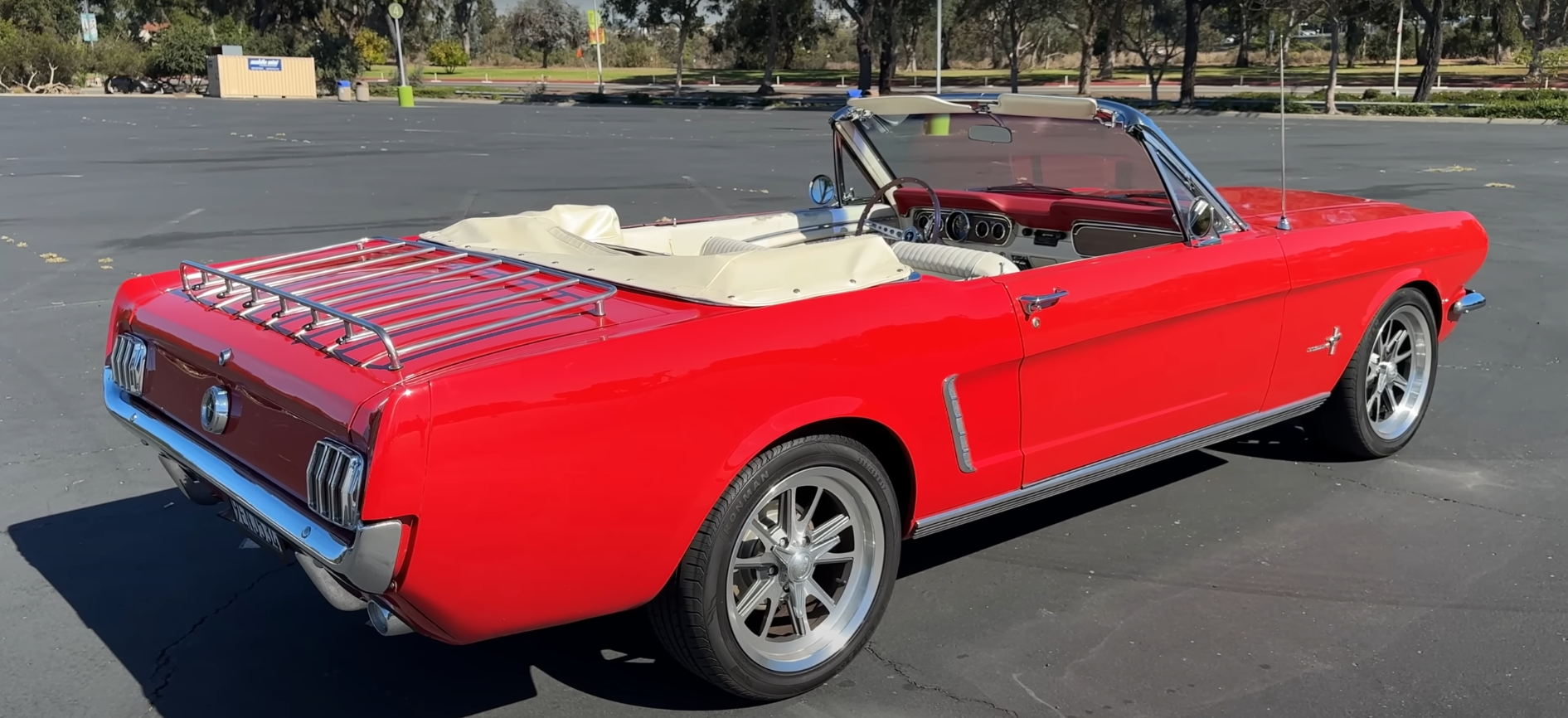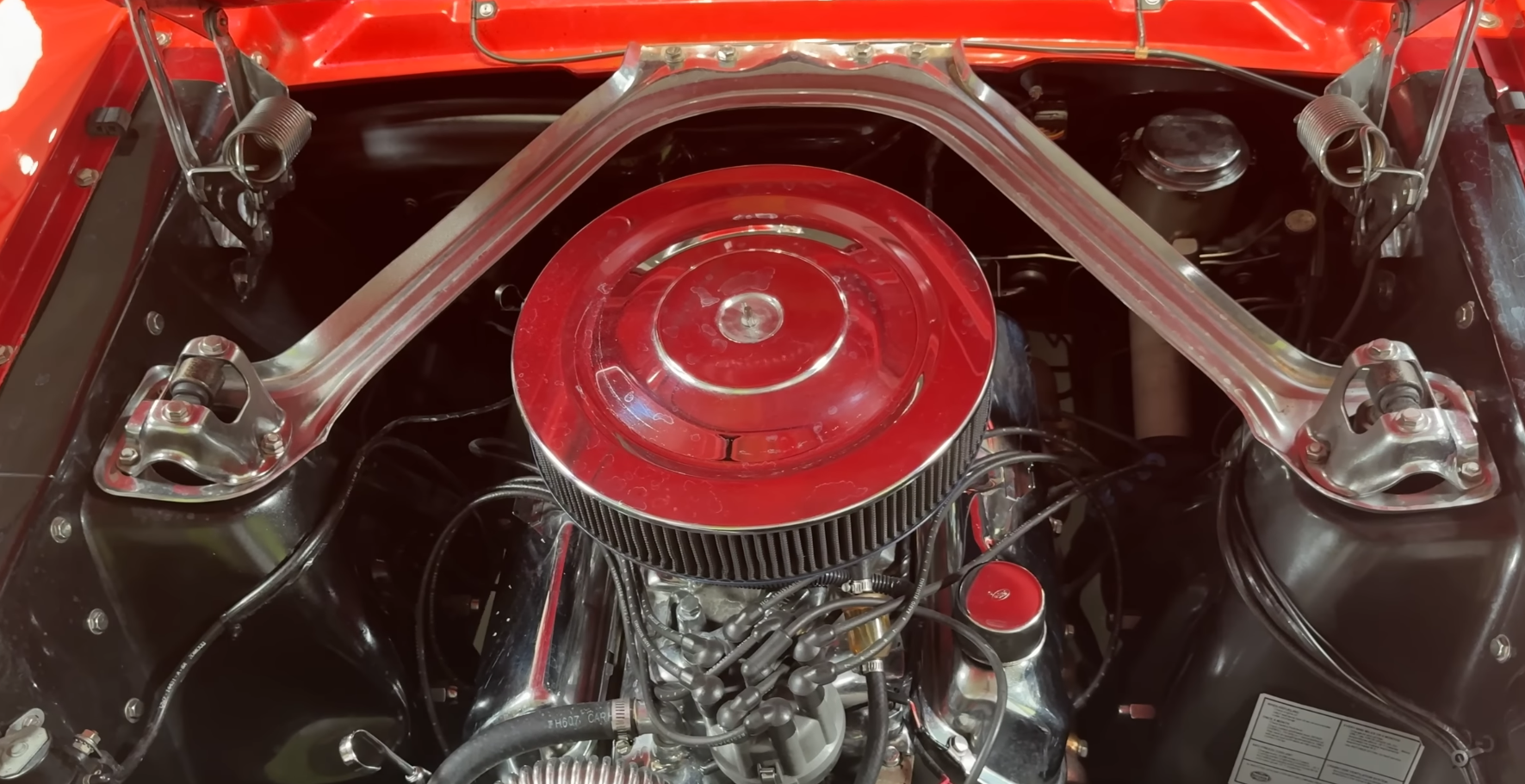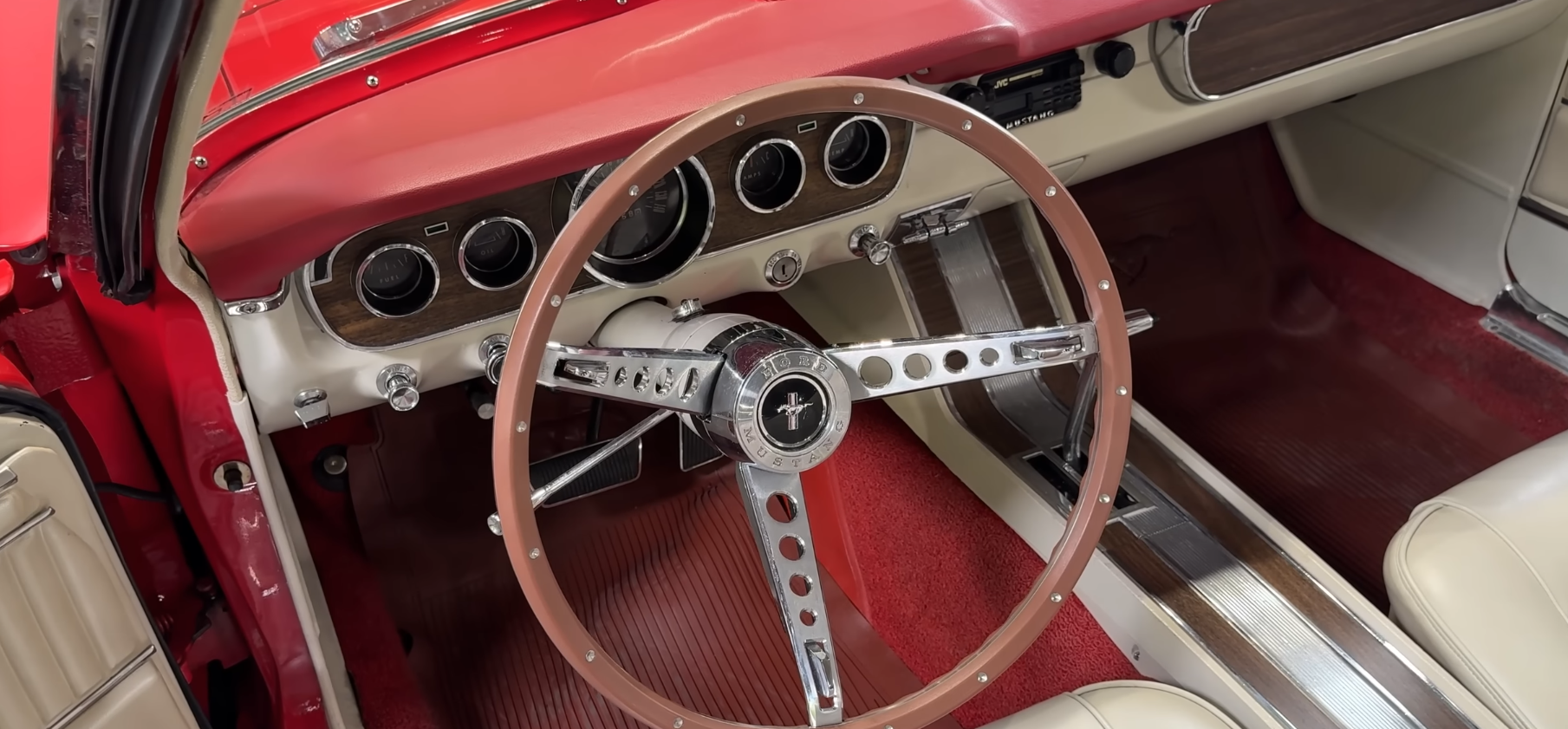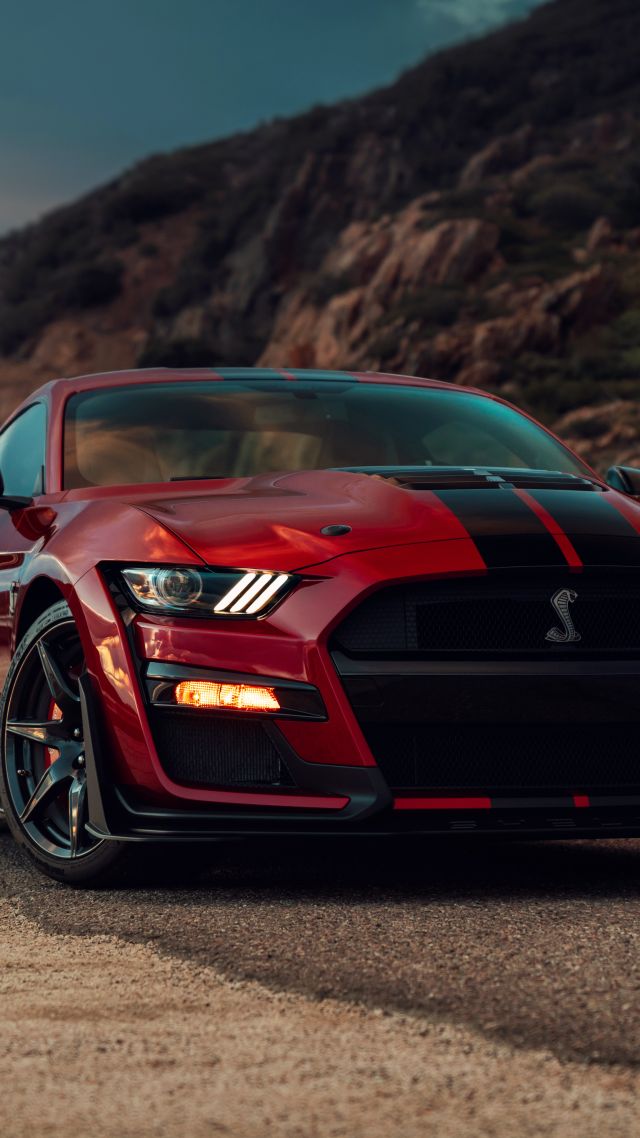The 1965 Ford Mustang convertible stands as an important car in American history. As the first generation of the Mustang line, it helped start a new era for sporty, affordable vehicles. Its design caught people’s attention when it was released, and it quickly became very popular. The car offered different engine options and was easy to work on, with simple parts and roomy space under the hood.
Inside, the Mustang featured unique touches, from metal trim to quirky controls and a well-known steering wheel style. Many people find driving this car to be a special experience, thanks to its classic charm and historic significance. Today, services like Turo allow anyone to get behind the wheel of classic models like the Mustang and enjoy a piece of automotive history.
Key Takeaways
- The 1965 Ford Mustang introduced a new style of sporty, affordable cars.
- It featured unique exterior and interior designs, with easy engine access.
- Platforms like Turo help make classic cars available for more people to experience.
Origins and Early Years of the 1965 Ford Mustang
Creating a Classic: The Start of the Mustang
Ford started working on the Mustang in late 1962. The goal was to make a small, sporty, and stylish car that was still affordable. The first Mustangs went on sale in April 1964. Ford offered a range of engines, starting with a basic straight six that made about 105 to 120 horsepower, and two V8 options—a 260 cubic inch V8 with 200 horsepower, and a 289 cubic inch V8 that went up to 270 horsepower.
| Engine Type | Horsepower Range |
|---|---|
| Straight six | 105-120 hp |
| 260 V8 | 200 hp |
| 289 V8 | Up to 270 hp |
Changing the Car Industry
When the Mustang came out, it made a big impact. It was popular as soon as it hit the market, with Ford selling 600,000 cars in 1966. This surprised other car companies, who quickly tried to catch up. The Mustang stood out because it was fun, stylish, and more affordable than muscle cars.
Other brands soon joined in:
- In 1967, Chevrolet released the Camaro and Pontiac came out with the Firebird.
- AMC made the Javelin in 1968.
- Dodge released the Challenger a few years later.
A New Type of Car Takes Off
The Mustang’s quick success started a whole new segment in the car industry. This was sometimes called the “pony car” segment. Pony cars were known as sporty, smaller cars that looked fast and exciting, but weren’t as extreme as full-size muscle cars. The Mustang gave Ford a big advantage, starting a trend other companies followed for years.
Exterior Design and Features
Classic Style Highlights
The 1965 Ford Mustang displays simple, sporty lines that made it a hit when it first arrived in the 1960s. The thin-rimmed steering wheel with drilled spokes and the Mustang emblem at the center are standout touches. Its design helped launch an entire class of stylish, affordable cars. The body is compact and has subtle details that make it timeless.
- Thin, old-school steering wheel
- Chrome trim and badges
- Sleek, low-slung profile
- Distinctive metal A-pillar
Convertible Roof Functions
The convertible top adds extra fun to the Mustang experience. When the roof is down, the open-air drive makes up for the lack of air conditioning. With the top up, small side windows can be angled for fresh air inside. These details give drivers more comfort, even in a classic car of this age.
| Feature | Description |
|---|---|
| Folding soft top | Easy to lower for open driving |
| Adjustable vent windows | Direct airflow without AC |
| Manual operation | No modern electronics, just simple levers |
Unique Exterior Details
Several features stand out as odd or interesting on this Mustang. There is a hood-closing handle, which means owners do not have to touch the paint when shutting the hood. The windshield washer system uses a simple bag attached with hooks, instead of a sealed tank hidden deep in the engine bay. The pointed, sturdy metal A-pillars are noticeable and can be uncomfortable if bumped, but they show the sturdy build quality of the era.
Exterior Oddities:
- Hood latch handle (keeps paint safe)
- Washer fluid bag, not a reservoir
- Metal A-pillars with a sharp tip
These small things set the original Mustang apart from both its rivals and modern cars.
Powertrains and Driving Experience
Different Engines Available
The classic 1965 Mustang offered more than one engine choice. The main options were a straight six-cylinder and a V8. The straight six had between 105 and 120 horsepower. There were also two V8 engines: a 260 cubic inch V8 with about 200 horsepower, and a 289 V8 that could reach up to 270 horsepower.
Below is a simple table showing the engine options:
| Engine Type | Horsepower Range |
|---|---|
| Straight Six-Cylinder | 105 – 120 hp |
| 260 cubic inch V8 | ~200 hp |
| 289 cubic inch V8 | Up to 270 hp |
Key Performance Details
Mustang models with the V8 engines delivered more power than the six-cylinder versions. The 289 V8 in particular was strong for its time, especially in a car that stayed affordable and light. Back then, a six-cylinder was more focused on style and price. The V8 models gave drivers the real performance that made the car stand out.
Simple Engine Bay and Maintenance
Opening the hood shows just how basic things were in 1965. There is a lot of open space, making the engine and parts easy to see and reach. Most things under the hood can be fixed or replaced with only basic hand tools.
The washer fluid bag is just held up by a couple of hooks—no hidden tanks or tricky hoses. Even closing the hood uses a handle under the edge, so hands stay off the paint. Working on these old Mustangs is much simpler than with newer cars, where everything is more crowded and covered.
Unique Interior Details and Oddities
Gauges, Switches, and Knobs
The 1965 Mustang’s dashboard is simple and direct. There are basic gauges without any digital screens or fancy tech. Controls are old-school and clearly labeled.
- Headlights: Pull a small switch left of the steering wheel.
- Wipers: Labeled “wiper” right next to the lights.
- Fog Lights: Another nearby toggle.
- Ignition & Lighter: Positioned on the right of the column.
The heater is set by metal sliders, and the windshield defogger is part of this cluster. A modern-looking cassette radio has been fitted in place of the original, but the dials are still old-style knobs.
The rearview mirror features a small switch for day and night driving. It says “day” on one side and “nit” (for night) on the other, a quirky spelling due to space.
Wheel Shape and Button Placement
The steering wheel stands out with its thin rim and metal spokes. It has round holes in the spokes to add a sporty feel.
- Horn Buttons: Located at the ends of the wheel spokes, including the bottom one. This design means the horn can be honked from different spots, no matter hand position.
- Center Emblem: The classic Mustang logo sits right in the middle.
Small Side Windows for Fresh Air
Instead of modern air conditioning, the Mustang offers vent windows. These are small, triangle-shaped panes at the front of each door.
How they work:
- Flip a chrome lever to swing the window open.
- Angle it to direct air into the car.
These windows provide airflow, especially important since this car doesn’t have built-in A/C.
Changes and Kept Details
Some features inside remain original, while others have been updated:
| Feature | Type | Note |
|---|---|---|
| Cassette Stereo | Updated | Newer addition, not original |
| Dashboard Controls | Original | Metal levers, labeled switches |
| Steering Wheel | Original | Thin, with Mustang emblem |
| Rearview Mirror Switch | Original | With quirky “nit” label |
Classic pieces, like the vent windows and dashboard controls, are left untouched. The tape player, however, is a reminder that some upgrades have crept in over time.
Behind the Wheel
Ride Quality and Steering
Driving the 1965 Mustang convertible brings a classic feel. The steering wheel stands out with its slim rim and distinctive holes in the spokes, showing off a vintage style. The wheel also has several horn buttons, so the driver can honk from almost any position.
The suspension is firm, giving feedback from the road. This model has a V8 engine, which was a stronger option at the time. While the power from the V8 is not extreme by today’s standards, it was impressive for its era and adds excitement to driving.
This car does not have air conditioning, so the small side vent windows help channel air inside. These can be adjusted with a simple chrome switch to provide comfort, especially with the roof up.
Everyday Details
There are several easy-to-use features inside. The headlights, wipers, and fog lights are handled by simple switches near the steering wheel. The heat can be adjusted using the sliders in the center.
Notable Features:
- Convertible roof for open-air driving.
- Day/night mirror with a labeled flip switch for glare reduction.
- Simple engine bay layout makes maintenance straightforward.
- Windshield washer bag is just a hanging pouch, not a hidden tank.
There is no built-in air conditioning, so airflow depends on the windows and the convertible top. The stereo shown is a modern cassette unit that fits neatly in the classic dashboard. The center console even includes an ashtray and a cigarette lighter, a common feature at the time. All switches and dials are easy to reach and clearly marked, making for a user-friendly interior.
Impact in Society
Changing Car Trends Through the Years
The 1965 Ford Mustang convertible quickly became a symbol of style and excitement. When it first came out, it stood out for being a small, affordable, and sporty car. In 1966 alone, Ford sold 600,000 Mustangs, showing its massive popularity.
It appealed to all kinds of drivers, not just car lovers. People admired its good looks and the range of engine options. The Mustang kept its place in car culture, and it is still seen as an important icon even after 60 years.
Mustang Sales (1966):
| Year | Mustangs Sold |
|---|---|
| 1966 | 600,000 |
Setting Trends for Car Companies
When the Mustang was released, it surprised many other car brands. Ford’s idea of offering a stylish, sporty car at a lower price made competing automakers take notice.
The quick success of the Mustang led Chevrolet to create the Camaro in 1967 and Pontiac to introduce the Firebird the same year. AMC launched the Javelin in 1968, and Dodge came up with the Challenger a little later.
These new cars followed the Mustang’s lead, starting a new type of car known as the “pony car.” This changed how car makers designed and sold sporty cars for years to come.
Other Brands’ Responses:
- 1967: Chevrolet Camaro and Pontiac Firebird released
- 1968: AMC Javelin introduced
- Early 1970s: Dodge Challenger added to the market
The Mustang’s early success helped create a lasting trend in the car industry, shaping what people would expect from affordable, fun-to-drive cars.
Turo and Classic Car Accessibility
Turo makes it much easier to find and rent unique cars, including classic models like the 1965 Ford Mustang convertible. Users can explore a wide variety of vehicles, not just ordinary rental cars. They can filter cars by type, location, and budget, making it simple to select anything from an SUV to a supercar.
Classic car fans benefit from several features on Turo:
- Browse without commitment: You can search Turo without entering dates or a specific location.
- Favorites list: It’s possible to make a list of the most interesting or desirable cars discovered on Turo.
- Global access: Turo is available in the US, Canada, the UK, France, and Australia.
Many people might never get the chance to drive an iconic car like the 1960s Mustang, but Turo opens up that opportunity. Instead of being limited to newer models or basic rentals, users can book older, special cars for road trips, events, or even just for fun. This kind of accessibility is not only convenient but can also give more people the experience of driving automotive legends.


